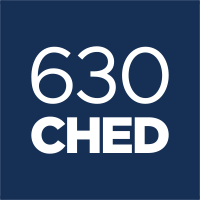Councillor Aaron Paquette is willing to bank that if the city pays for water and sewer installations in an industrial park in his ward, the spin-off revenue will pay for much-needed improvements downtown that are holding up development.

Paquette, who represents Ward 4 in northeast Edmonton, told council’s Urban Planning Committee he’ll have a hard time explaining to his suburban constituents the logic behind a monthly rate hike on their EPCOR bill to help offset the cost of upgrading fire hydrants in the core.
It’s being done in the name of reaching a 25 per cent target for infill development.
“If that’s good, where is our percentage goal for economic development?”
Paquette told reporters Tuesday he’ll ask for a report when council reconvenes after the summer break in August to look at the potential return on installing water and sewer in the Edmonton Energy and Technology Park.
Paquette said if there is a 25 per cent infill target, there should also be the same for economic development.
“Shouldn’t we be more deeply concerned with holding up the development of hundreds of millions of dollars of industrial and commercial development that actually provides jobs for people?”
“People are wondering why it’s not developing. The answer is because there isn’t connections with water and drainage.”
“If we have a comprehensive report that shows us how to actually get this done, we open up massive economic opportunities here in Edmonton that right now we’re not capitalizing on.”

Get weekly money news
Paquette was responding to a motion passed by the committee that will see all EPCOR rate payers see an bill increase of less than one per cent a month to help fund a pilot project that would see infill developers tap into $1.2 million in each of the next two years to upgrade fire hydrant infrastructure.
The money would be only for those projects that help the greater community.
For instance, if there’s a new infill project that needs the water line to be moved from a back alley to the street front, the city would cost share with developers. If it’s just to handle a new development, without any benefit to anyone else, the developer would have to pay the whole bill.
Developers would also have to pay for the entire hydrant move if the only reason it’s being done is a new design feature, like a front access to the property.
Mick Graham of Single Tree Developments, the past president of IDEA — the Infill Development in Edmonton Association — said he abandoned two projects, including a 12-unit condo project that would have required $700,000 in hydrant upgrades.
Mariah Samji, the executive director of IDEA told the committee it’s a common occurrence.
“I spoke to a consultant who said a client was working on a 35-unit project in Oliver, which had been reduced from 40 units at the request of the community, that will no longer be going forward specifically because of the fire hydrant costs.”
The land will be flipped to another developer who can make the project work by changing the details of the budget, she said.
Downtown councillor, Scott McKeen, said he’s seen several proposals for Oliver that the community wants with street-level housing that would be attractive for young families.
“Their (developers’) story was they couldn’t go ahead with the fire hydrant charges. It was going to make the business case impossible.”
“This was a major barrier to some really nice projects.”
Paquette questioned city staff about the unfairness and was told the move is to make the city more compact.
City council set a goal of 25 per cent infill to reduce overall costs and to attract and retain talent to the city as young people want to live closer to downtown because of the lifestyle, planning boss Peter Ohm told the committee.
“Instead of creating new infrastructure to accommodate growth, we should be better utilizing the existing infrastructure we already have.”
Mayor Don Iveson said he could see an “eighth-of-a-penny” on everyone’s monthly bill.
“A negligible rate impact to be able to put a little bit more aside for the pilot because the last thing I would want is for the pilot to go really well and for us to run out of money really fast. I wouldn’t want to hit rate payers too much either.”
The pilot is $2.4 million over two years. IDEA told the committee it would like to see $5 million.
More will be discussed Friday at Utilities Committee, where chair, Councillor Ben Henderson, said two options for raising money will be discussed, both involving a renegotiation with EPCOR.






Comments